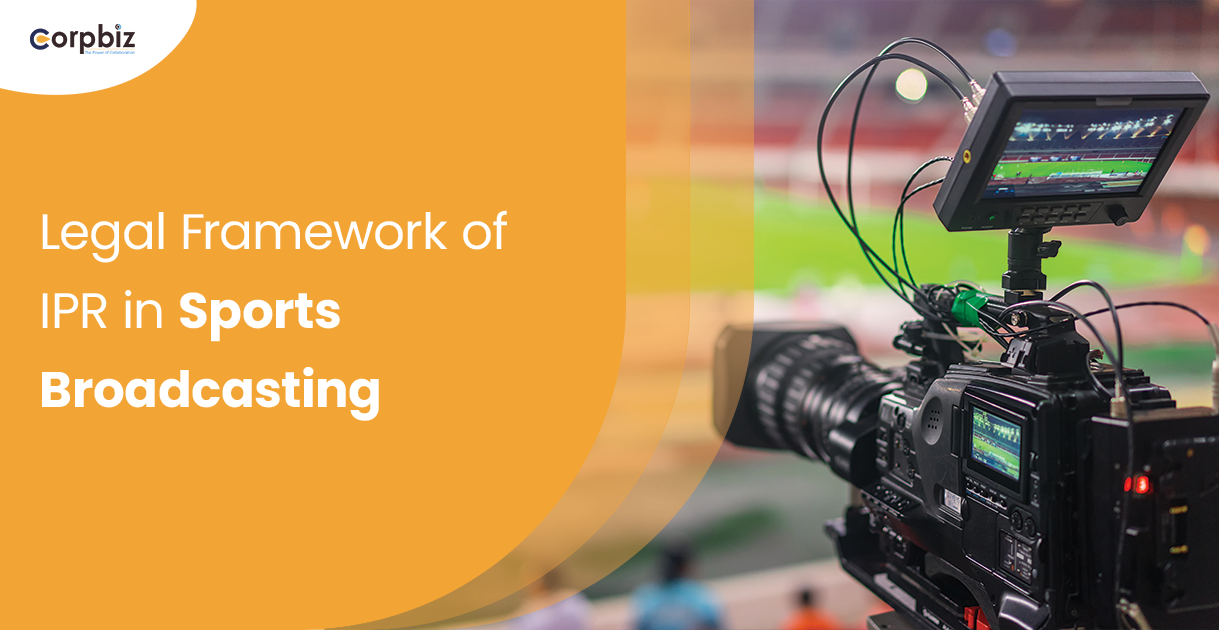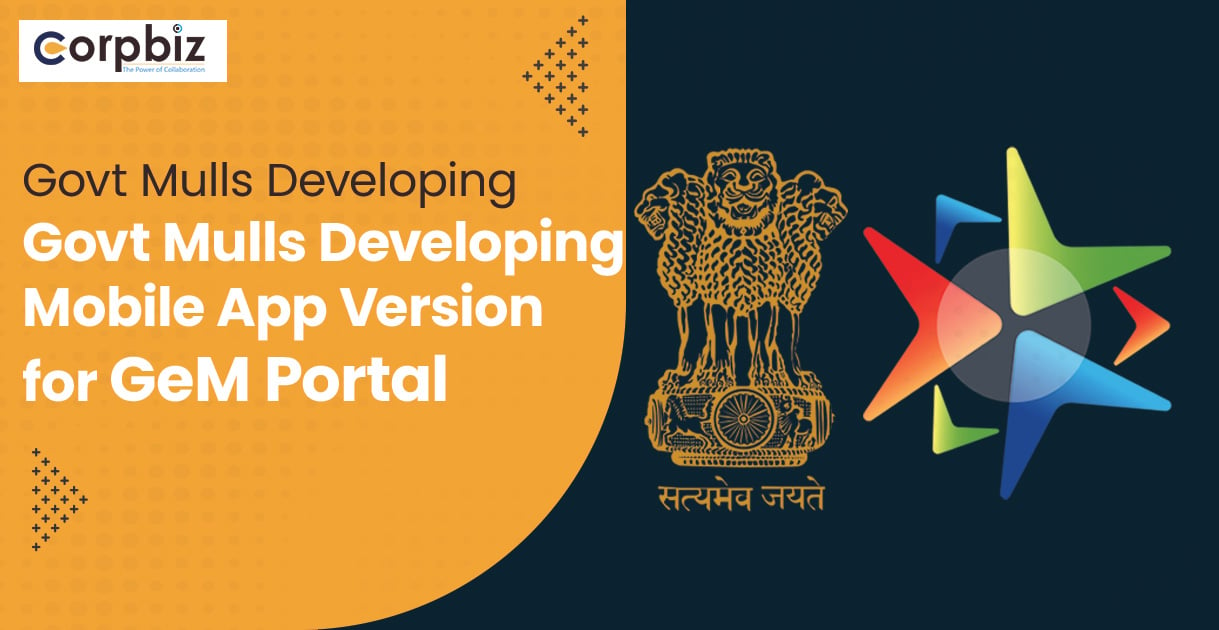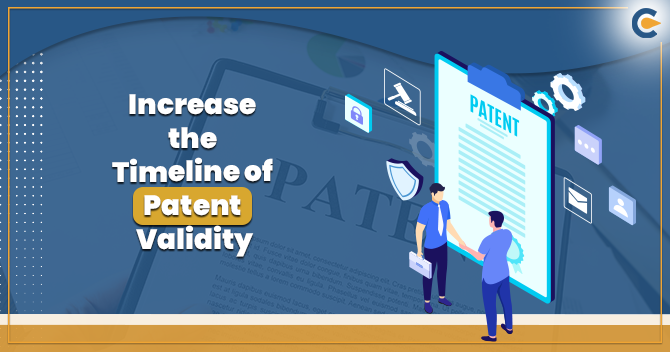The broadcasting industry operates in the fast-changing world of sports, connecting fans to live action, highlights, and analyses. At the backdrop of every broadcast, though, is the labyrinth that legal frameworks create to protect the involved Intellectual Property Rights (IPR). Understanding the legalities pertaining to IPR in sports broadcasting is essential for the broadcasters and the spectators.
This blog threads its way through the legal regime of IPR in the field of sports broadcasting, with an emphasis on the fundamental principles, legislation and the challenges faced in this constantly moving field.
Intellectual Property Rights in Sports Broadcasting
Intellectual Property Rights under Law is the legal protection given to the innovators for the invention, designs, and artistic works done by them. This right protects the interests of the content creators, broadcasters and the sporting bodies. In short, sports broadcasting relies significantly on IPR. Under this, Copyright, Trademarks and Broadcast Rights are the primary forms of IPR in sports broadcasting.
Let’s have an understanding of each primary form of IPR in Sports Broadcasting in detail:
1. Copyright:
Copyright is one of the salient areas of IPR in sports broadcasting. It protects the original works of authorship which include their audiovisual copyrights, graphics, and written materials. In the area of sports, they dwell on and encompass live broadcasts, recorded footage, commentaries, and promotional materials about sports.
For instance: football coverage over the air is a Copyrighted work. It is copyrighted by the broadcast company, which possesses the exclusive right to reproduce, distribute, or display the content. Any sort of unauthorised action, reproduction or distribution of the content can lead to infringement of rights, ultimately resulting in legal consequences.
2. Trademarks:
Trademark is another vital aspect of IPR related to sports broadcasting. It protects the brand’s name, logo, and symbols associated with the sports event, the teams, and the broadcasting companies.
For Instance: The logo of the FIFA World Cup or the branding of some sports channels is protected under the Trademark Law.
These Trademarks help prevent unauthorised use by a third party and the dilution of a brand’s identity, which could potentially weaken the brand. Trademark Protection is vital to maintaining commercial value and upholding the image that any sports event and the broadcaster may bring to bear.
3. Broadcast Rights:
Broadcast rights are the rights that are specifically meant to transmit the live sporting events in question. They are usually acquired from the Licensing Agreements signed between the Sporting Organisations and the Broadcasters. The rights for broadcasting are typically granted to broadcasters for live events, highlights and other related content. Selling these broadcast rights is thus a significant revenue stream for these sports organisations.
For Example, the English Premier League receives hundreds of millions of dollars from selling Broadcast Rights to over 200 countries worldwide. These contracts tend to involve not only the duration but also territory and medium, where the broadcaster has exclusive rights.
Legal Framework Governing IPR in Sports Broadcasting
Let us now understand the legal framework behind governing the IPR in Sports Broadcasting. International treaties, National Laws and legislation from a series of industry-specific regulations essentially underpin the enforcement of the IPR in sports broadcasting. Therefore, some of the key International Treaties and National Legislations that help in forming the critical structure of this regime are as follows:
International Treaties
Some of the Key International Treaties are as follows:
➢ The Berne Convention for the Protection of Literary and Artistic Works:
The Berne Convention, formed in 1886, is one of the earliest and most essential International Copyright Treaties. It guarantees that a work created within one member country will be granted copyright protection in all the other member countries. This principle is entailed by another principle entailing that every broadcaster’s copyrighted content is protected across the globe, referred to as the ‘National Treatment.’
➢ Rome Convention for the Protection of Performers, Producers of Phonograms and Broadcasting Rights:
The Rome Convention of 1961 has expanded protection to performers, producers of phonograms, a well as broadcasting organisations. In the case of broadcasters, it grants exclusive rights to their signals, ensuring no other party can retransmit or reproduce the signal without prior permission.
➢ Agreement on Trade-Related Aspects of Intellectual Property Rights (TRIPS):
TRIPS is regulated by the World Trade Organization (WTO), which established a certain minimum standard of protection concerning IPRs, including Copyrights, Trademarks or Broadcast Rights. It was crucially notable for the emphasis laid on enforcement mechanisms and dispute resolution processes by countries that are members holding fort to have robust standards for IPR.
National Laws
Some of the Important National Laws are as follows:
➢ United States:
In the United States, the Copyright Act of 1976 covers the protections surrounding copyrighted works, including those of sports broadcasts. Trademark protection is provided under the Lanham Act, which protects the brand identity. The Federal Communications Commission implements the licensing of broadcasts and ensures compliance with IPR standards.
➢ European Union (EU):
Harmonisation of the IPR framework of the European Union has been undertaken through directives and A regulations. It does harmonise many aspects of the protection of copyright across the member states because of the Copyright and the Audiovisual Media Services directives. Interpretation and actions from the CJEU are needed for enforcement.
➢ United Kingdom:
Just like any other policy after Brexit, the UK has to have its own IPR regime. With regards to protection of Copyright is regulated under the Copyright, Designs and Patents Act, 1988, while The Trade Marks Act of 1994 addresses the protection of Trademarks. Broadcasting regulation is done by the Office of Communications (Ofcom), which takes care that its broadcasting companies comply with IPR laws.
➢ India:
India heavily reinforces IPR regarding the Copyright Act of 1957 and the Trade Marks Act of 1999. The Ministry of Information and Broadcasting sees that broadcast licensing shall be undertaken within their dominions. Hence, the members are bound to comply with the laws enacted for Copyright and Trademarks.
Challenges Faced During the Protection of IPR in Sports Broadcasting
Despite the efficient and strict legal framework, several challenges still exist in protecting IPR in sports broadcasting. The difficulties are linked to a technological environment that began with piracy issues and has taken on a global dimension through sports transmissions. The following are some of the challenges faced:
1. Digital Piracy
The first one is Digital piracy, which continues to pose a major challenge to IPR in sports broadcasting. Live unauthorised streaming of sports through websites and social media platforms tremendously degrades the value of Broadcast Rights. The action has simultaneously led to revenue loss for broadcasters and serious effects on the integrity of the experience for viewers.
Broadcasters have followed various means to combat digital piracy, such as Digital Rights Management (DRM) technologies, Watermarking, and other actions against violative websites. However, since digital piracy is an evolving process, ways must continuously change and be innovative towards it.
2. Technological Advancements
New Technologies, although liberating for IPR, come with their own strains. OTT platforms and social media have become heaven for consumers as they have completely changed how sports content is consumed, shared, or delivered to them. Though they open up new means of making money, their ease of use makes enforcing Broadcast Rights and Copyrights somewhat tricky.
For example, Concepts like streaming live on social media can result in the unauthorised sharing of copyrighted material. Broadcasting companies, social media companies, and regulators must address this challenge collaboratively as a team by ensuring that mechanisms for protecting the content are put in place.
3. Global Reach and Jurisdictional Issues
More importantly, sporting events are broadcast to multiple jurisdictions, further complicating the issue of IPR enforcement. A broadcaster is likely to be the sole holder of the right to broadcast in a given territory, yet infringing streams may originate elsewhere. Jurisdiction-based issues complicate legal actions against infringers farther from the home turf of radio and TV broadcasters.
International cooperation and harmonisation of IPR laws are essential. If adopted, this kind of international cooperation and harmonisation of IPR laws will make it easier for organisations like WIPO and WTO to help facilitate cross-border enforcement and dispute resolution.
Future Trends and Innovations for IPR in Sports Broadcasting
Intellectual Property Rights in sports broadcasting settings will further change concerning the ongoing evolution of technology. Few of the future trends and innovations will shape the future of IPR protection in Sports Broadcasting. Some of the Future trends and Innovations for IPR in sports broadcasting are as follows:
- Blockchain Technology:
Blockchain technology is regarded as promising IPR protection in the sports broadcasting business. It can track ownership and the distribution of copyrighted content due to its intrinsic capability to be decentralized and transparent in its transactions. Smart contracts in blockchain can automate Licensing Agreements and Royalty payments while ensuring equitable pay to content creators.
- Improved Anti-Piracy Technologies:
Anti-piracy technologies constantly evolve to be in a position to fight back against digital pirates, who are using improved, more sophisticated methods against Intellectual Property.
Some examples include the increased popularity of techniques such as digital fingerprinting, watermarking, and enhanced encryption.
Digital fingerprinting involves the application of unique identifiers embedded in the broadcast signal, which pinpoint an illegal stream back to its source. The Watermarking technology allows invisible watermarks to be embedded in content so that tracing and verification back to a legitimate broadcast can smoothly take place.
New improved encryption techniques grant authorized viewers access to broadcast content and help safeguard it from unauthorized preview.
- Collaboration with Technology Companies:
Broadcasters and Sporting organizations now work in partnership with businesses that own technologies to fortify IPR. Now, they have to join forces with the owners of social media, different forms of video distribution networks and even ISPs to help pull down the activities related to piracy.
- Legal Developments:
Legislative changes have become imperative to harmonize IPR laws with the dynamic technological environment. Governments and regulatory bodies are reviewing and updating laws and regulations to confront newly emerging challenges in sports broadcasting.
The new legislation will focus on enhancing the penalties relating to digital piracy, improving the cross-border enforcement mechanisms, and providing more precise guidelines to safeguard Broadcast Rights. These legislative advancements will maintain the viability and practical application of IPR laws in the face of advanced technologies.
- Increased Use of Digital Rights Management (DRM):
Digital Rights Management (DRM) technologies are becoming more sophisticated in offering digital content protection. DRM solutions control access to copyrighted content and enforce usage restrictions. It’s time to copyright digital content to give wings to trends and innovations for IPR in digital broadcasting.
- Virtual and Augmented Reality (VR/ AR):
Virtual and Augmented Reality (VR/ AR) technologies change how people view sports. New IPR technologies will bring new opportunities related to broadcasting and content creation but at the same time will also pose challenges.
Protecting content in VR/AR may demand innovation in how copyright and trademark protections are realized and secured. This could include upcoming new licensing technologies and the use of the latest technologies to track and control the distribution of virtual/AR content.
- Data Analytics for IPR Enforcement:
Data analytics is being widely embraced and is becoming a crucial tool for IPR enforcement in sports broadcasting. This tool can be used to scan material from various sources, identify any pattern of infringement, trace any further unauthorized streams, and determine the impact of Anti-piracy measures and campaigns.
These Data Analytics tools can help broadcasters make sound decisions about enforcing data protection. This proactive approach will help improve the overall efficiency of IPR protection.
- Consumer Education and Awareness:
Consumer education and awareness are among the most essential tools for IPR protection. Educating sports fans on the importance of IPR and the consequences of their infringement will decrease the demand for pirated content. Such campaigns could be part of a vast effort to infuse a newfound culture of respect for IPR in the public, educational programs and fan communities.
This creates an environment where there are possibilities to understand the Intellectual Property needs and its value and interests in broadcasting and sporting organizations for responsible sports content consumption.
Conclusion
By identifying the elements of the legal framework for IPR in sports broadcasting, it becomes clear that legal protection is crucial in order to protect the rights of the content creators, broadcasters as well as sports organisations.
Despite the threats like digital piracy and emergent technology issues being a matter of concern, they can be compensated by emergent technologies like blockchain, DRM and enhanced antipiracy technologies etc, giving a rather bright outlook on this dynamic field.
Frequently Asked Questions
What are the primary forms of IPR relevant to sports broadcasting?
The Primary forms of IPR are Copyright, Trademarks and Broadcast Rights.
What are the International Treaties governing IPR in sports broadcasting?
Some key International Treaties governing IPR are The Berne Convention, The Rome Convention, and TRIPS Agreement.
What are the challenges in protecting IPR in sports broadcasting?
The main challenges in protecting IPR in Sports broadcasting are Digital piracy, technological advancements and global jurisdictional issues.
How might blockchain impact IPR protection in sports broadcasting?
Blockchain impacts IPR protection in sports broadcasting by tracking content ownership, automating licensing, and ensuring fair payments.
What role does consumer education play in IPR protection?
It reduces demand for pirated content and promotes responsible consumption.
Read our article: The Role Of IPR In The Protection Of Biodiversity











